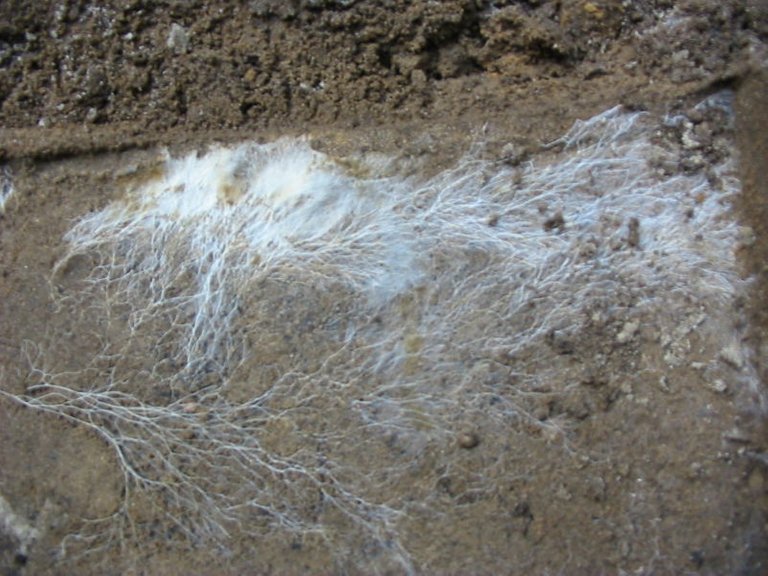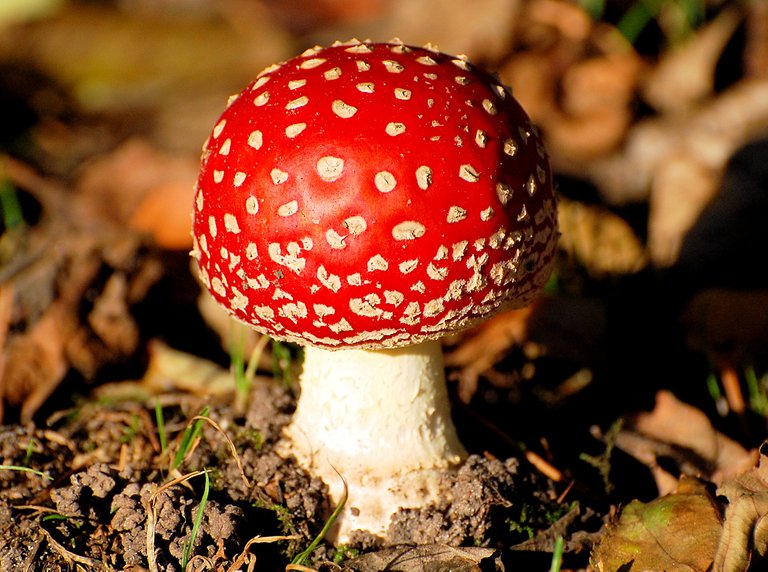Mushrooms are everywhere in the forest during late summer and all of the fall, but most people have much less knowledge of how mushrooms live, than they do with plants and animals. For starters, due to the chemistry of their cell membranes, they share more common structures with animals than they do with plants, so the saying that they are more closely related to humans than to tress is actually true.
Note that this post is a quick post about how mushrooms can grow without the need of energy from the sun, as well as a quick guide to understanding mushrooms in general. The fungi has a lot of unique species with cool adaptations, so there are exceptions to the general information below. However, this post will teach you the basis of how most mushroom-producing fungi operates.
All mushrooms come from a fungus. The mushroom is actually just the name of the reproductive organ of the fungi, but it is also the only part of the fungus we actually see commonly with our own eyes. The non-reproductive part of the fungus is called the mycelium, and actually makes most of the body mass of the individual. Imagine the mycelium as the root network of a plant, and the plant / flower as the mushroom.

An image of an underground mycelium to show what it looks like. Image by Lex vB at nl.wikipedia, posted with the GNU Free Documentation License.
The mycelium looks something like a threaded white mass with extremely many small branches. The branches are in fact all threads of hyphae, which is simply long threads of fungus-cells that usually are only one cell thick, and can be very long. Each cell has its own nucleus, and extended by regular mitosis (common cell division). The mycelium will be very dense, and can grow extremely large. In fact, the largest living organism is a mycelium, estimated to be the size of 1,665 football fields!
The mycorrhiza
All common mushrooms have amycelium, but a lot of the ones we eat also have something called a mycorrhiza. This is essentially a symbiosis between the fungus and the roots of a plant or tree, meaning they cooperate to be able to live in the environment.
The mycorrhiza is a mutualistic symbiosis, meaning it is beneficial to both the plant and the fungus. And this is where I finally get to explain how most mushrooms can grow without having leaves that can collect energy from photosynthesis.

An image of a root with a mycorrhiza. Notice how the fungus is used to increase the surface area of the root to increase its nutrient uptake. Image by OregonCavesNPS, posted with the Creative Commons Attribution 2.0 Generic license.
How the mushrooms can grow without photosynthesis
Now we can finally get down to what this post is about, how the mushrooms can grow without getting energy from photosynthesis. The answer is actually simple now that you know how a fungus functions. The mycelium, located below the ground, can transport nutrients and water from the ground into the fungus. This is done by chemical reactions on the cell membrane of any of the fungi cells in the mycelium.
The mycelium can get all the nutrients they need by these chemical reactions, but it requires that the nutrients are in fact in the soil. This is one of the reasons as to why we often use mushrooms as a good sign when looking at soil quality.
As for the fungi that has a mycorrhizal symbiosis, it can focus directly on key nutrients such as metals and other ions. It does not need to worry at all about getting energy, because it will be trading these ions in exchange for sugar / energy from the tree. This way the tree get a bigger “root network” from the fungus, and get more ions, while the fungus get its energy need from the tree.
So to summarize, the reason as to why the mushrooms can grow without getting energy from photosynthesis is because they get their energy either directly from absorbing it from the soil, or they get it from trading with the trees they are living in symbiosis with.
Why do the fungi produce mushrooms?
So, the fungus can get everything they need from the mycelium, so why bother to spend a lot of energy on creating a mushroom? The answer is that mushrooms are the reproductive organ of the fungus, and in order to create and distribute spores, it needs an above-ground mushroom. The cells within the mushroom is the same as the cells in the mycelium, but they have the ability to form spores that are used to spread the population. A single spore can establish a completely new mycelium at a different location, which will eventually be able to grow and produces its own mushrooms.
So, the mushroom is not needed for getting energy or nutrients, and its only function is to produce and release spores.

The famous Amanita muscaria. What you are looking at there is just a little part of the whole fungus, and is in fact only the reproductive organ. Image by Flemming Christiansen, posted with the Creative Commons Attribution-Share Alike 2.0 Generic license.
Mushroom-Monday
This post is part of a project I started, called #Mushroom-Monday. I plan to post about mushrooms every Monday, and I want as many people as possible to join me! Today I’m also giving away some STEEM to people who join me, so check out my post about Mushroom-Monday by clicking here.
Thanks for reading, and please leave a comment if you have any questions!
Thanks a lot. I learned new things.
I'm glad to hear that! :)
Very interesting and informative post. Thank you, I have been studying soil bacteria last week on a permaculture design course.
How is the mushroom monday tradition going? Still in action?
I'm glad you liked it! That sounds awesome. Do you have plans to blog about this course?
And no, unfortunately I don't really do mushroom Monday anymore. It kind of fell apart at one point some time ago..
Nice post, very informative!
please upvote, reply, resteem and follow ,thank you, you're awesome!
Fascinating stuff. I'm amazed about how much I really didn't know. Thanks for injecting me with this new and interesting knowledge!
You're welcome! Thanks for reading :)
And this is only a quick introduction to fungi! There are so many unique things about them that are vastly different from animals and plants, so it is really incredible to delve into the world of fungi!
Really informative and easy to read, thanks for sharing this info! :)
Thanks for the feedback! I'm happy to hear that you found it informative :)
I am amazed to know it grows without preparing it's food from chlorophyll and does not require or is independent of the process of photo=synthesis. Upvoted and followed.
Thanks for the feedback! Yes, fungi are really cool when it comes to living, and like I said in the post, lots of the stuff they do are extremely different from plants or animals, so they are really interesting to learn about!
Really interesting post, I learned some cool things about mushrooms. Upvoted! :)
Thanks! I'm glad to hear that you learned something new :)
I like finding edible mycorhizzal mushrooms, because it means that I can go back to the same area every year. And pretty much I can count on finding those mushrooms. Slippery Jacks and Hedgehogs are two examples. Here's my posts on Slippery Jacks: foraging, using. With mushrooms that are decomposers, once they have used up all the nutrients, I have to find a new foraging spot - but not with the mycorrhizal mushrooms!
Yea, having a "secret mushroom spot" filled with mycorrhizal fungi is really great when the mushroom season begins!
Don't tell anyone your secret spot, lol! :D
Haha, I never will! :)
: )
woohoo, I was the 100th upvoter! :D Thanks a ton for the post, It was written nicely and thought out very well. great job! keep up the good posts. I'm a mushroom lover myself so I always appreciate seeing something related.
A little late to the party, but I love the idea of mushroom monday. I've just recently started to get my own little group of friends hunting and identifying mushrooms when we go on hikes. Keep up the great posts!
Wonderful stuff. Glad to read about others writing about fungi. Followed